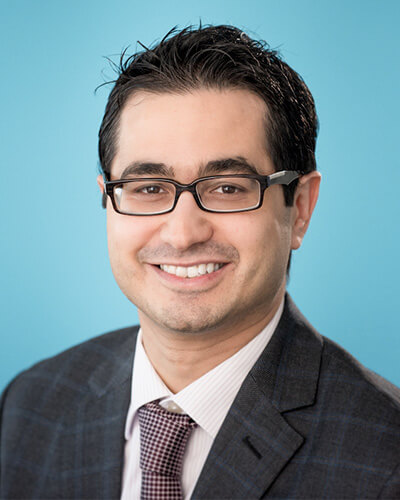
Associate Professor Piero Perucca
Novel treatments for drug-resistant epilepsy brought about by precision medicine, advances in epilepsy surgery investigations, the application of a certain neurostimulation technique to a severe form of epilepsy, and the use of artificial intelligence-assisted workflows are all cause for hope in 2022.
Leading epilepsy clinician and researcher Associate Professor Piero Perucca, the Director of the Comprehensive Epilepsy Program at Austin Health, says the progress in the management of epilepsy is on the cusp of significant improvements.
“There is lots of hope for patients with epilepsy,” he says.
“What I’m hoping to see in 2022 are advances in the treatment of epilepsy. This could be in the form of precise medical treatments, whereby the right treatment is found for the right patient at the right time, for example by applying a medication that targets a gene defect and reverse the dysfunction caused by that defect; moving to new ways of utilising investigations for epilepsy surgery with a therapeutic upside; and considering deep brain stimulation for certain patient subgroups.”
“Also, AI which may well become part of the clinical workflow in the years to come, and this is a hot topic in epilepsy.”
Outcomes unchanged
The complex neurological condition is in the spotlight ahead of National Epilepsy Day on March 26. Each year more than 10,000 people in Australia are diagnosed with epilepsy. About one-third of these people experience drug-resistant epilepsy, which requires comprehensive care and support.
Associate Professor Perucca says despite new epilepsy medications introduced over the last three decades, the seizure outcome of the medical treatment of epilepsy has not changed substantially.
“It has been fairly disappointing to see that the outcomes have not changed,” he says. “We are in a situation of stagnation of treatment outcomes.”
He says the treatment pathways are changing rapidly into the realm of precision medicine, in which treatments for certain groups of patients target the causes of epilepsy.
One example of these breakthrough treatments is the mTOR inhibitor Everolimus, which has been shown to improve seizure control for up to 40 per cent of people with drug-resistant focal epilepsy and tuberous sclerosis complex (TSC).
“There are many labs working around the world in this space,” he says. “That has paved the way to further investigations looking at treatments that can target genetic defects or other causes of epilepsy.
“If we can narrow the gap on that 30 per cent (of drug-resistant epilepsy) that would make a tremendous difference.”
sEEG investigation
Advances in stereoelectroencephalography (sEEG) are also proving effective to treat seizure-generating areas of the brain.
He says sEEG is gaining momentum in Australia, and this investigation is moving from only mapping the area of the brain from which seizures arise with goal of enabling resective epilepsy surgery to also treating seizure-generating brain areas using thermocoagulation.
“I anticipate this will be used more and more this year as results appear to be more and more promising in this space,” he says.
Likewise, deep-brain stimulation has been shown to improve seizure control in patients with drug-resistant focal epilepsy, and has been recently suggested to be beneficial in Lennox-Gastaut syndrome.
Associate Professor Perucca says interest in using AI to mine and integrate data to improve diagnostic and therapeutic workflows in epilepsy, will also be important this year.
For example, AI-based approaches can integrate information from different sources, such as EEG, imaging, genetic sequencing data with clinical data to predict clinical outcomes in individual cases and identify patients benefitting from specific treatments.
“There is tremendous interest around the world about this,” he says, noting the Australian Epilepsy Project, a $30m national initiative funded by the MRFF to implement AI in epilepsy management.
“We’re really at the beginning of exciting times,” he says.